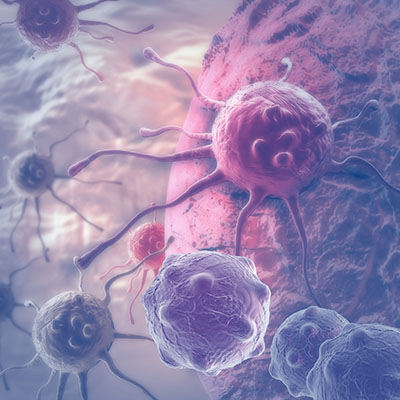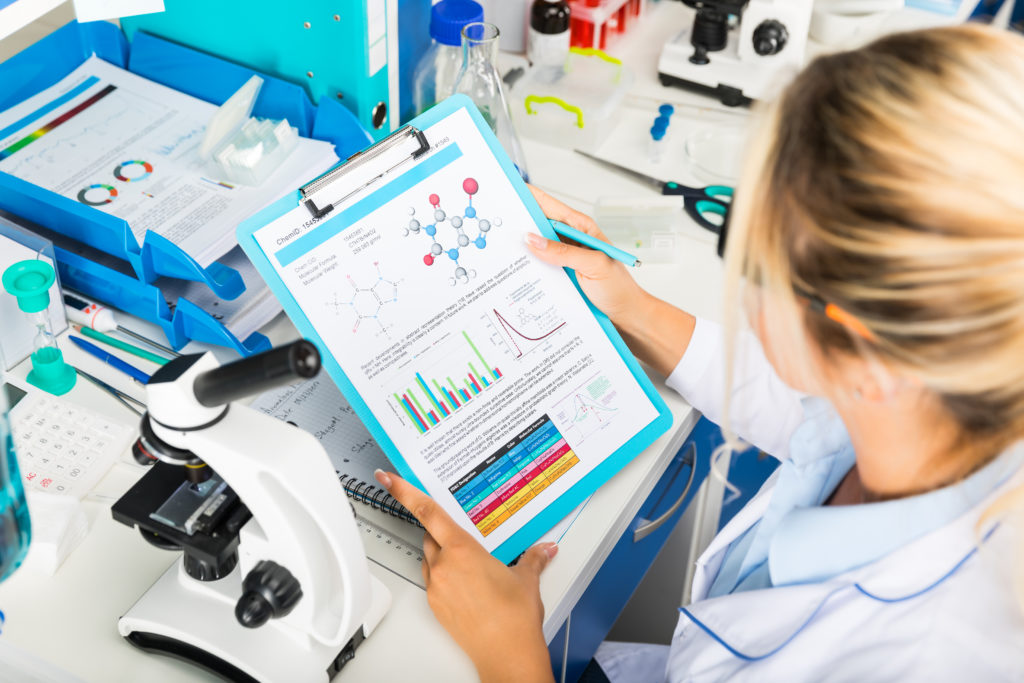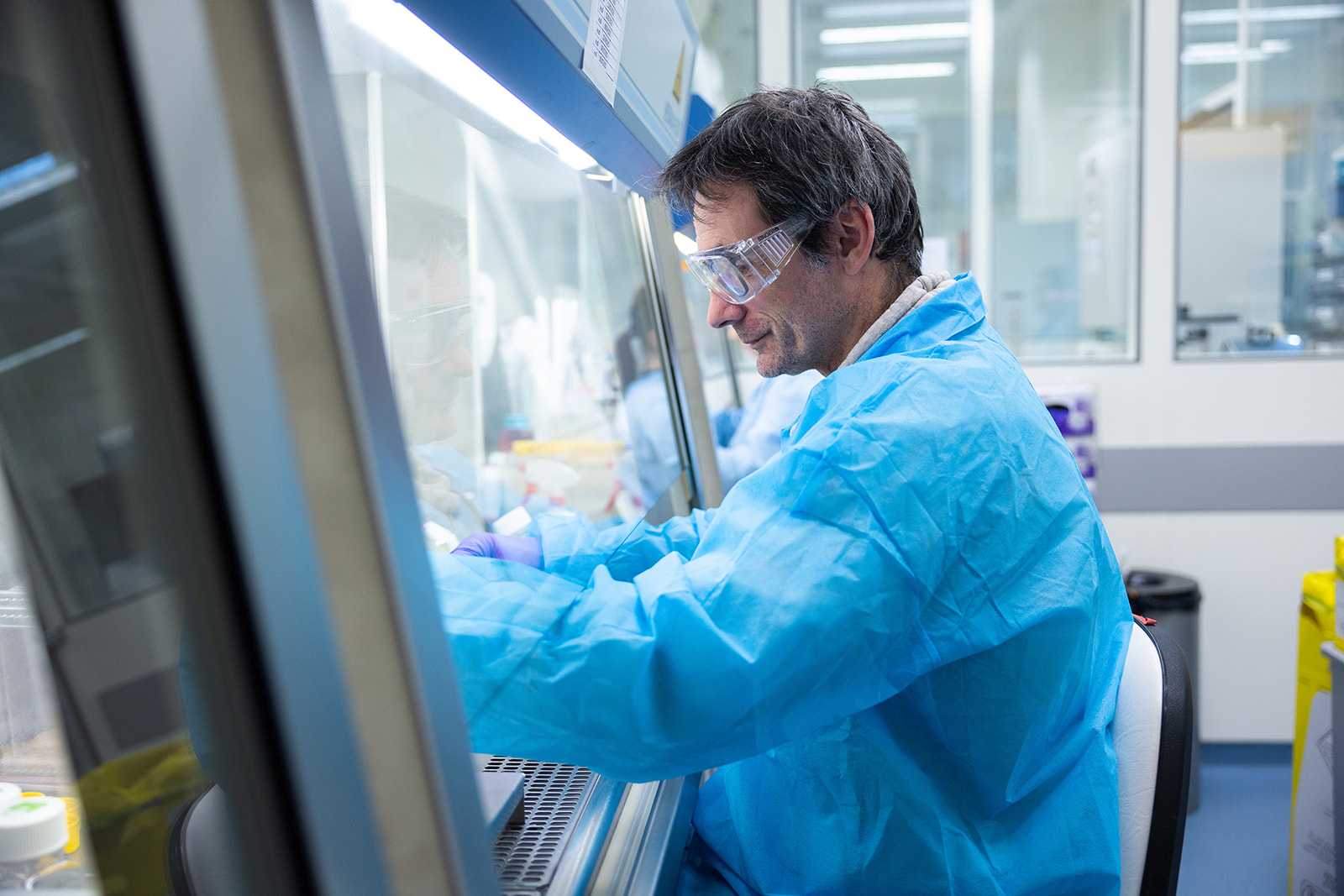


Capture highly sensitive and accurate interaction data for ligands using a radioligand binding assay
As a crucial tool in characterizing the interaction between compounds and their targets, binding assays offer information-rich interaction data to guide your discovery program. Radioligand binding assays represent a highly sensitive and specific screening option for capturing this data. Unlike alternative labeled methods which add a tag to your compound and can artificially influence screening results, such as fluorescent labeling, a radioligand approach does not fundamentally alter the structure of your ligand.
We offer a diverse range of radioligand binding assays in various formats in combination with a dedicated radionuclide lab and over 25 years of expertise in this method. Radioligand binding assays can:
- Determine the affinity of your ligands and ligand binding parameters (receptor binding assay)
- Generate accurate data to rank your compounds by affinity (displacement assay)
- Determine the mode of action (competition assay)
- Determine the number of targets in your biological system (absolute quantification)
Principles of radioligand binding assays
Radioligand binding assays involve using a radioactively labeled ligand, known as the radioligand, to trace and quantify its binding to the target receptor. The binding interactions can then be measured using specialized equipment that detects radioactivity.
Utilizing a competition binding format, we can determine the equilibrium affinity of unlabeled compounds. Radioligand binding assays also facilitate an exploration of the binding mechanisms of drug-like molecules, and by conducting a time-course analysis, we can ascertain binding kinetics.
Examples of assays you can conduct using radioligand binding include:
-
Radioligand competition binding assay
Radioligand competition binding assays employ a single concentration of radioligand and a competitor. The competitor can be the cold ligand or another substance which is known to have an affinity for the receptor.
In this way, you can assess the relative affinities (Ki values) of test compounds for a receptor site in membrane homogenates or cells. Radioligand competition binding assays involve incubating varying concentrations of the unlabeled test compound with a fixed amount of radioligand. The IC50 (nM) is then measured to determine the concentration at which the test compound competitively inhibits the binding of the radiolabeled ligand to its receptor.
An example of competition assay binding curves:
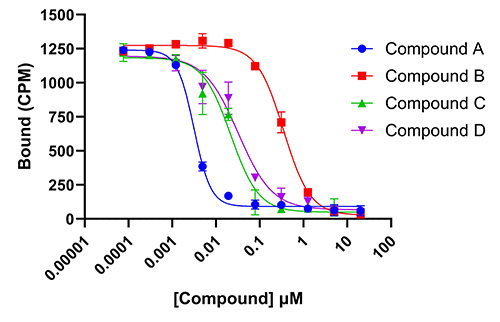
Competition assays evaluate the following binding characteristics:
- Competitive nature of a molecule for its target
- IC50 and Ki values
-
Saturation radioligand binding assay
In a saturation radioligand binding assay the radioactive molecule is incubated at increasing concentrations:
- Alone: total binding (T)
- With large excess of unradiolabled molecule: non-specific binding (NS)
Saturation assays evaluate the following binding characteristics:
- Specific binding
- Kd
- Bmax
[3H]-Arg-Vasopressin binding on CHO membrane expressing V2 receptor
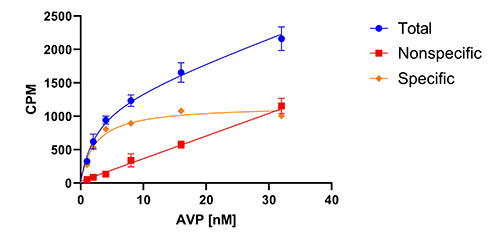
Dedicated radionuclide facilities to support radioligand binding studies
With over 25 years of experience and a dedicated radionuclide lab, Oncodesign Services has partnered extensively with pharmaceutical and biotechnology researchers to execute radioligand binding studies. Our specialist team are experienced in providing precise insights into the molecular interactions that govern the efficacy and specificity of potential therapeutic targets.
Our biochemistry and enzymology assays can include:
- Enzymatic assay setup / design
- Assay automation
- Binding analysis
- Elisa / MSD / AlphaLISA / HTRF setup and design
In combination with our medicinal chemists, in vivo pharmacologists, and DMPK scientists, our integrated teams can accelerate your research program by seamlessly integrating compound flow and knowledge.
Talk to our team today to learn more about this process, assess whether a radioligand binding assay is the right approach for your research, and request a quotation.

